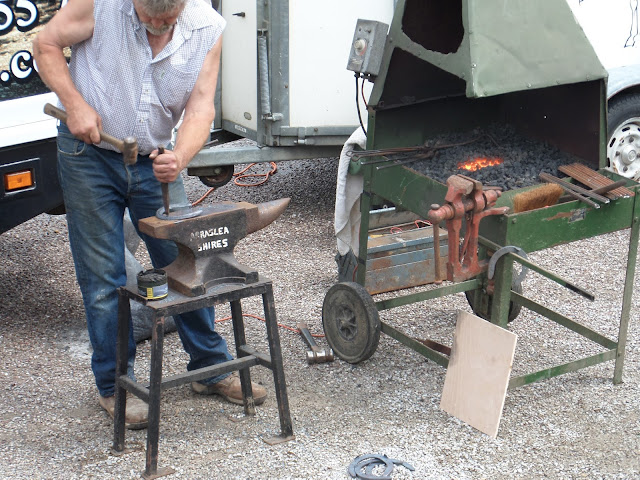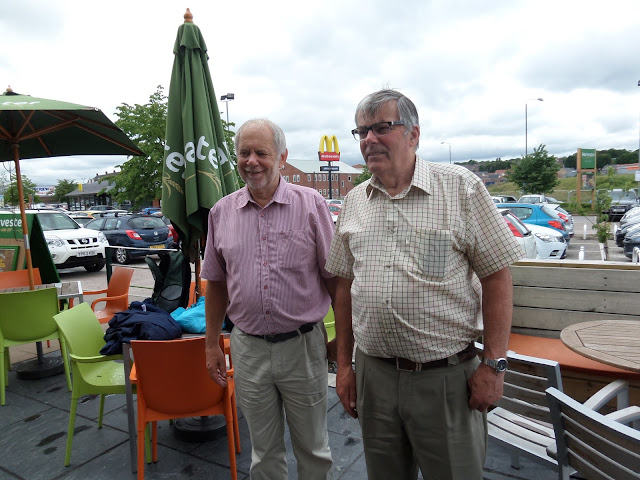Bye Bye Italy, we are ready to move on once more and so it's on to Leonardo da Vinci airport to board our Alitalia flight to Heathrow, didn't start off to good with about an hours delay due to a "technical" problem..oh well. Not the best airline we have traveled on, but not the worst either. Having gone from Berlin to Dubrovnik with Germanwings which is Lufthansa's budget airline we expected Alitalia to come up winners in any comparison but Germanwings far exceeded our expectations, maybe something to do with having a nutter pilot fly one of their planes into a mountain. Can't have passengers thinking bad things about our airline! Anyway, I digress, we arrived in Britain on 3 June a little late and so did not get to our hotel in Maidstone until a little later than we would have liked. The reason for Maidstone was to give us a head start in going to the Dockyard in Chatham which I had visited on a previous trip and wished to complete. Mrs Currin was going to accompany me on this occasion, but we could not justify the more than $50 each admission for something I had already seen and to which Mrs Currin was not actually busting to go to. A few other sights were on our list in the Kent and Sussex area but we found that we had already been there as well, so really a wasted day to start our Britain visit, oh well again. We needed to get up into Suffolk that night as by Wednesday we were due to stay with some friends from one of our river boating trips and they live right up in Lincolnshire in Stamford a charming town built almost entirely from the local honey coloured stone. Nearby is Burleigh, famous for the horse trials but we had visited on a previous trip so spent some time being shown around Stamford, they have the most amazing Ironmongers there which I thoroughly enjoyed browsing around. Patrick, our host, now 80 had been a bit of a big wheel in the brewery and had worked in the local branch at some stage of his career. He had done a full brewing apprenticeship which included a few months learning the art of cooperage having made a Ferkin as his test piece. He is a very interesting fellow and him and wife, Barbara, proved to be most excellent hosts. We stayed only two nights but had a most wonderful time including a lunch at the "George" which apparently has a reputation second to none in the area. Friday morning and it is off to Eyam, known as the Plague Village.
The history of the plague in the village began in 1665 when a flea-infested bundle of cloth arrived from London for the local tailor. Within a week his assistant George Vicars was dead and more began dying in the household soon after. As the disease spread, the villagers turned for leadership to their rector, the Rev. William Mompesson, and the Puritan Minister Thomas Stanley. They introduced a number of precautions to slow the spread of the illness from May 1666. They included the arrangement that families were to bury their own dead and relocation of church services to the natural amphitheatre of Cucklett Delph, allowing villagers to separate themselves and so reducing the risk of infection. Perhaps the best-known decision was to quarantine the entire village to prevent further spread of the disease.
The plague ran its course over 14 months and one account states that it killed at least 260 villagers, with only 83 surviving out of a population of 350. This figure has been challenged on a number of occasions with alternative figures of 430 survivors from a population of around 800 being given. The church in Eyam has a record of 273 individuals who were victims of the plague. Survival among those affected appeared random, as many that remained alive had had close contact with those who died but never caught the disease. For example, Elizabeth Hancock was uninfected despite burying six children and her husband in eight days (the graves are known as the Riley graves after the farm where they lived).[13] The unofficial village gravedigger, Marshall Howe, also survived despite handling many infected bodies.
Plague Sunday has been celebrated in the village since the plague's bicentenary in 1866 and now takes place in Cucklett Delph on the last Sunday in August. Originally it was held in mid-August but now coincides with the much older Wakes Week and the well dressing ceremonies.
A reminder of the village's industrial past remains in the name of its only pub, the Miner's Arms. Built in 1630, before the plague, it was originally called The Kings Arms. Opposite the church is the Mechanics' Institute, originally established in 1824,[17] although the present building with its handsome pillared portico dates from 1859 and was enlarged in 1894. At one time it held a library paid for by subscription, which then contained 766 volumes. The premises now double as the village club. Up the main street is the Jacobean-styled Eyam Hall, built just after the plague. It is currently managed by the National Trust and was opened to the public in March 2013. The green opposite has an ancient set of village stocks reputedly used to punish the locals for minor crimes.
Catherine Mompesson's tabletop grave is in the churchyard and has a wreath laid on it every Plague Sunday. This is in remembrance of her constancy in staying by her husband, rather than moving away with the rest of her family, and dying in the very last days of the plague. The church's burial register also records "Anna the traveller, who according to her own account, was 136 years of age" and was interred on 30 December 1663. A more recent arrival there is the cricketer Harry Bagshaw, who played for Derbyshire and then acted as a respected umpire after retiring. At the apex of his headstone is a hand with a finger pointing upwards. Underneath the lettering a set of stumps is carved, with the bails flying off and a bat which has just hit the wicket.
Respect for its heritage has not always been a priority in Eyam. In his Peak Scenery (1824), Ebenezer Rhodes charges that by the start of the 19th century many former gravestones of plague victims had been pulled up to floor houses and barns and that ploughing was allowed to encroach on the Riley Graves; that the lime trees planted on either side of Mrs Mompesson's grave had been cut down for timber that the missing piece from the shaft of the Saxon Cross had been broken up for domestic use and that in general the profit of the living was put before respect for the dead.
An Interesting Painting by Constable of the Old Waterloo Bridge before it was demolished. The room in which it hangs at Ickford is made entirely of timber salvaged from that bridge.
Also at Ickford
Yesterday we went to Arkwright's Mill, a cotton mill from the 1780s and which is said to have been the real beginning of much of industry as we know it today. Prior to then all cotton had been spun by skilled women in their homes with a spinning jenny. Arkwright developed a mechanised method powered by water and operated entirely by unskilled woman and children. They worked a full 12 hour day, but with a generous quarter hour for morning tea and a full hour for lunch, both breaks having to be taken on site so as to be fully controlled by Mr Arkwright. Staff had to clock on and clock off. He provided their housing as well and so had complete control over his workers. Production was increased a thousand fold and his model mill was copied hundreds of times around the country, Mr, later Sir Richard, Arkwright owning a high percentage of them himself becoming a very very wealthy man.
We also went on a short train ride up the Derwent valley.
Train Driving
Other Eccentrics at Cranford by Arkwright's Mill
Today we lunched with an old Naval Colleague whom I had not seen for 50 years and had a most wonderful time reminiscing, well maybe not Mrs Currin nor Mrs Dick, but for Clem and I there was a lot of catching up to do.
REA Currin RNZN with CEA Dick RN
The weather since arriving in Britain has not been the greatest to be quite honest, raining a lot and quite chilly, although the locals keep telling us "but it is still quite warm". When we arrived in Eyam on Friday night it was as if we were driving along a river such was the down pour. Still this is England we keep reminding ourselves.
That is all for now, look after yourselves and best wishes,
David








My old mate in Derby, David Arkwright is descended from Richard Arkwright.
ReplyDelete